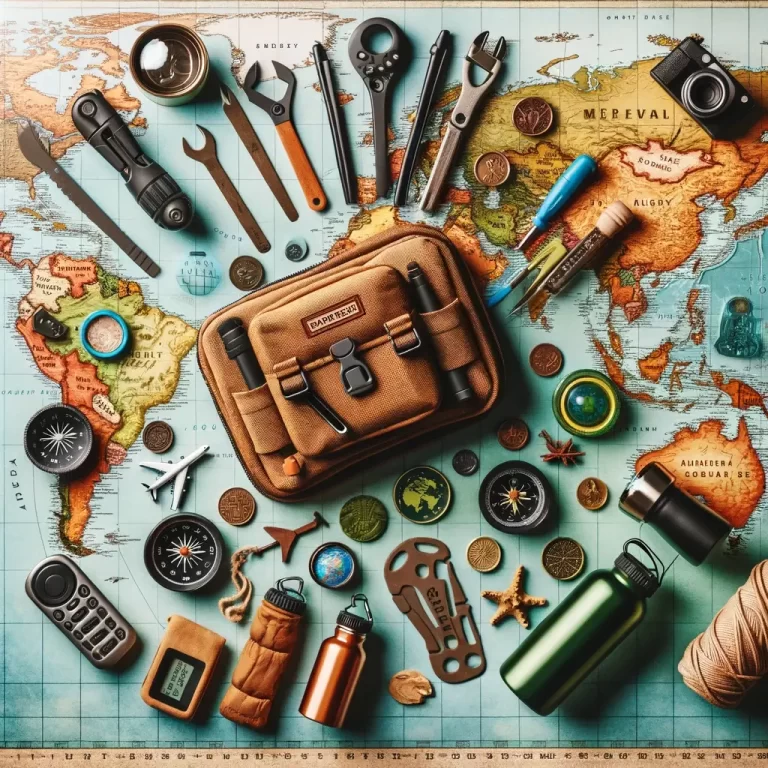Backpacking snack ideas: tasty options for the trail
As a seasoned backpacker, you know that what you pack can make or break your adventure, especially when it comes to food. Whether you’re taking on the Pacific Crest Trail or a weekend escape in the backcountry, having the right backpacking snack ideas can keep your energy soaring and your pack light. Let’s dive into some easy, tasty, and nutrition-packed options to fuel your next journey.
Healthy Hiking Snacks for Every Hiker
When it comes to healthy snacks for hikers, balance is key. You want foods that are both nutrient-dense and delicious to keep your morale and energy up. Here are some go-to snacks that meet both criteria:
- Mixed nuts and seeds, rich in fats and proteins.
- Dried fruits for a quick sugar boost and fiber.
- Energy bars that combine oats, nuts, and fruits.
- Dark chocolate for a touch of indulgence and antioxidants.
- Homemade trail mix with a personal twist of your favorite ingredients.
These snacks provide a good mix of carbs, proteins, and fats, essential for sustaining your hiking pace.
Remember to choose lightweight backpacking food that won’t weigh you down but will provide the needed caloric intake for your adventure.
Best Backpacking Breakfasts
To start your day right, you need a breakfast that’s both easy to prepare and energizing. Here are some of the best backpacking meal ideas for your morning routine:
- Instant oatmeal with a scoop of protein powder or nuts.
- Breakfast bars or granola with a high-calorie count.
- Dehydrated fruit with a cup of hot coffee or tea.
- Pre-packaged freeze-dried meals for a no-fuss hot meal.
These breakfast options are designed to be easy backpacking snacks to pack, ensuring you spend less time cooking and more time enjoying the sunrise.
Backpacking Lunches and Snacks
For lunch and daytime snacking on the trail, opt for foods that require minimal preparation. Here’s what to eat on a backpacking trip when the sun is high and the miles stretch ahead:
- Tortillas with nut butter or hummus for a quick wrap.
- Beef jerky or trail biltong for a protein fix.
- Energy gels or chews if you need a swift calorie spike.
- Cheese sticks or hard cheeses that can withstand warmer temps.
These snacks are perfect for on-the-go refueling, allowing you to maintain a steady energy level throughout the day.
DIY Backpacking Meals
Creating your own backpacking meals can not only be cost-effective but also tailored to your taste. Some DIY backpacking food options include:
- Dehydrated beans and rice spiced to your preference.
- Homemade dehydrated stews that rehydrate with boiling water.
- Couscous or quinoa salads with dehydrated veggies.
- Ramen noodles with added freeze-dried vegetables and meats.
Not only do these homemade meals taste better than store-bought, but you’ll also have the satisfaction of eating something you prepared yourself.
Grocery Store Backpacking Food Ideas
Believe it or not, your local grocery store is a treasure trove of backpacking food. Some great finds include:
- Calorie-dense trail snacks like peanut butter filled pretzels or chocolate-covered almonds.
- Pre-packed tuna or chicken pouches, which are excellent protein sources.
- Instant rice or noodle packets that just require boiling water.
- Instant mashed potatoes that can be spiced up with cheese or bacon bits.
These options are affordable and convenient, perfect for those looking to hit the trail without fuss.
How Much Food Should You Pack for Backpacking?
When it comes to packing food, the rule of thumb is about 2,250 to 2,750 calories per day for the average hiker. High-fat foods like seeds and nuts are preferred for their calorie-to-weight ratio. However, the actual amount can vary based on your body weight, exertion level, and personal metabolism.
Always pack a little extra for emergencies and be sure to plan according to the length of your trip and your expected caloric burn.
Backpacking Food Strategy Tips
A successful backpacking trip is all about strategy, especially with your food. Consider these tips:
- Plan meals you love – eating should be enjoyable, even on the trail.
- Balance nutrition with palatability – you’re more likely to eat what tastes good.
- Consider resupply strategies for backpacking, like resupply boxes or stops in towns.
With the right strategy, you’ll have delicious, energizing meals throughout your trip.
Packing and Food Storage Tips
Proper packing and storage are crucial to keep your food safe and to avoid attracting wildlife. Use these tips:
- Use odor-proof bags or containers to store your food.
- Hang your food at night if you’re in bear country.
- Repackage foods to minimize waste and space.
Lightweight backpacking meal plans aren’t just about the food itself, but also about how you carry and protect it.
Favorite Backpacking Cooking Gear
Your cooking gear should be as lightweight and efficient as your snacks. Some favorites include:
- A compact stove that’s reliable in all weather conditions.
- Lightweight pots with dual functions, like a pot that can be a mug.
- A spork or utensil tool that can handle multiple types of food.
Choose gear that’s tried and tested, ensuring you can cook with ease no matter where you set up camp.
Backpacking Snack Ideas: Questions for Further Exploration
What Instant Food to Bring Backpacking?
When you’re miles from civilization, instant food can be a lifesaver. Opt for options like instant oatmeal, freeze-dried meals, or instant mashed potatoes. These foods are not only lightweight but also quick to prepare, which means more time exploring and less time cooking.
Moreover, look for meals that only require hot water to prepare, minimizing the need for extensive cooking gear.
What to Eat on a Backpacking Trip?
The best foods for backpacking are those that are calorically dense and require minimal preparation. Think nuts, dried fruits, energy bars, and ready-to-eat pouches of proteins. Also, consider incorporating spices and condiments to zest up otherwise bland meals.
Don’t forget to plan for a mix of macronutrients to keep your energy levels balanced throughout your trek.
What Are the Best Snacks for Thru Hiking?
Thru-hikers require snacks that are high in calories and nutrients yet lightweight. Look for calorie-dense trail snacks like nut butter packets, jerky, and energy bars. These snacks provide sustained energy, vital for long days on the trail.
Also, high-fat options like cheese or salami can be a savory treat that provides a calorie boost.
How Do You Pack Light Food for Backpacking?
To pack light, concentrate on dehydrated or freeze-dried meals, which offer a significant reduction in weight and space. Pack foods with a high calorie-to-weight ratio and consider using a food dehydrator to make your own lightweight meals and snacks.
Repackaging bulk items into single-serving portions is also key to a lighter pack and better portion control.
To help you visualize some of these ideas, check out this video on backpacking food tips:
Remember, the goal is to enjoy your backpacking trip without the burden of unnecessary weight or unappetizing meals. With these backpacking snack ideas and meal tips, you’re well on your way to an adventure filled with stunning views and satisfying eats. Happy trails!







